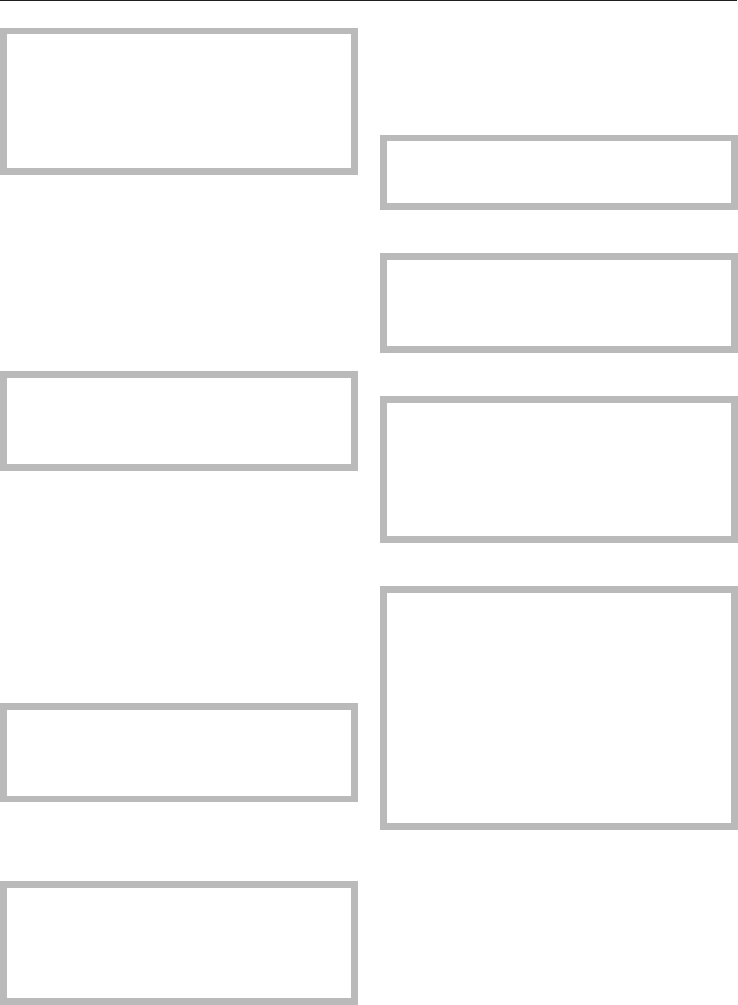
Do not place aluminium foil dishes
on the grilling rack in case the dish
sparks or arcs. If sparks occur,
transfer food to a microwave-safe
container.
–
Pieces of aluminium foil
For even defrosting and to avoid
overcooking unevenly shaped cuts of
meat, poultry or fish, small pieces of
aluminium foil may be used to mask
wingtips or other thin parts for the last
few minutes of the programme.
Make sure that the aluminium foil is
at least 2 cm from the oven walls at
all times. It must not touch the walls.
– Metal meat skewers or clamps
These should only be used if they are
very small in comparison to the size of
the cut of meat.
Glassware
Heat-resistant glass or ceramic glass
are ideal for use in the microwave oven.
Crystal glass is unsuitable as it
contains lead which could cause the
glass to crack in the microwave.
Porcelain
Porcelain is a suitable material.
Do not use porcelain with gold or
silver edging or items with hollow
knobs or handles, as insufficient
ventilation may cause pressure.
Earthenware
Decorated earthenware is only suitable
if the decoration is beneath an all-over
glaze.
Earthenware can get very hot, and
may crack.
Glazes and colours
Some glazes and colours contain
metals which make them unsuitable
for use in a microwave oven.
Wood
Wooden dishes are not suitable.
Moisture contained in the wood
evaporates when exposed to
microwave energy, causing the
wood to dry and crack.
Plastics
When purchasing plasticware, make
sure that it is suitable for use in a
microwave oven.
Plastics must only be used with
Microwave Solo.
They must be heat-resistant to a
minimum of 110°C. Otherwise the
plastic may melt and fuse with the
food.
Special plastic utensils designed for
use in microwave ovens are available
from good retail outlets.
Melamine is not suitable as it absorbs
energy and heats up.
Suitable containers for microwave ovens
17


















